Informing the Canberra medical community since 1988




Informing the Canberra medical community since 1988



The mood was mostly jovial at AMA ACT’s Politics in the Pub event on 29 May, as politicians and aspiring politicians shared their views on topics including KPIs for hospital executives’ performance, waiting lists, data transparency and evaluation of health programs.
However, things took a frosty turn when ACT Health Minister Rachel StephenSmith defended her Government’s decision to apply payroll tax to GPs’ earnings and only exempt practices that bulk bill 65% of their patients.
Ms Stephen-Smith noted Canberra’s bulk billing rate was among the lowest in the country, and spoke of
wanting to reward general practices who were “doing the heavy lifting” when it comes to bulk billing.
New AMA ACT President, Dr Kerrie Aust, who was chairing the panel discussion, interjected to say all GPs in the territory were doing a lot of “heavy lifting”, regardless of their billing model. “GPs are tired of being asked to prop up the health system by their own goodwill,” Dr Aust said. “General practice is not valued as it should be.”
Ms Stephen-Smith blamed successive Federal Liberal governments’ underfunding of Medicare for the challenges general practices face today.
Dr Aust said part of the solution needed to be making general practice an attractive career choice for young doctors. Ms Stephen-Smith agreed, saying CHS was looking to develop general practice rotations for junior
Better access to MRI at I-MED Radiology
Find MRI services accross four locations in Canberra at Deakin, Woden, Tuggeranong and Belconnen.
Scan the QR code for a list of Medicare eligible MRI examinations

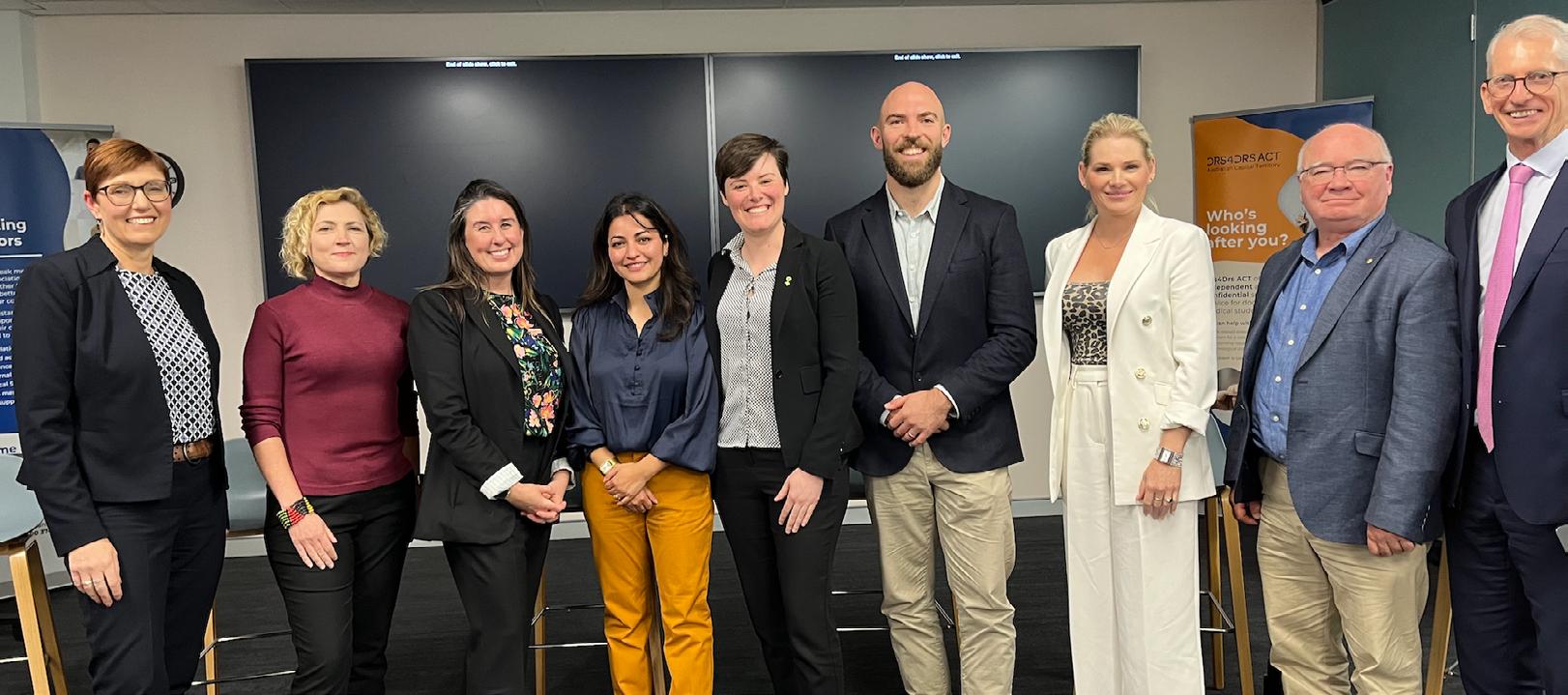
doctors to give them a positive experience of the specialty, though added that a singleemployer model was unlikely in the territory.
The tension in the room thawed as the Health Minister spoke enthusiastically about integrated and multidisciplinary GP-led primary care in the context of a Capital Health Network pilot currently underway. The findings of the Federallyfunded Primary Care Pilot will inform the future
development of the Federal Government’s MyMedicare program, as well as providing useful insights for the ACT health system.
Greens' GP proposal falls flat
The only new policy idea of the night was presented by Emma Davidson of the Greens, who shared her party’s plan to provide additional funding to GPs who provide bulk-billed care for musculoskeletal
Continued page 5

Rebatable MRI scans available for Medicare eligible examinations at Belconnen and Woden
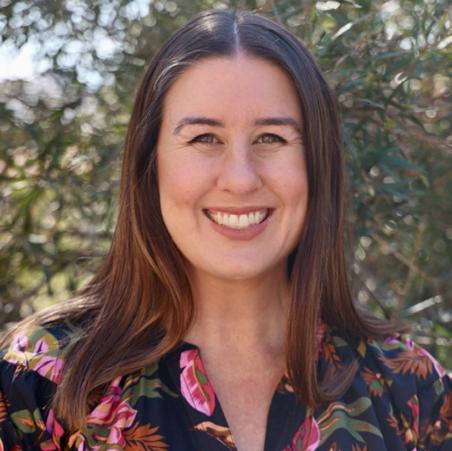


Having recently taken on the role of AMA ACT President, I would like to begin this column by thanking the many wonderful doctors in our region who give so much for the sake of their patients.
Doctors are a diverse group, and this is reflected in the AMA’s membership base, which includes GP and non-GP specialists, in public and private practice, spanning different generations and having trained in very different contexts. And yet, we work better when we work together. That’s why I’m so keen to build collaboration across our profession. So please, reach out and get in touch, or even better, come along to our events, and let us know what’s important to you.
At our AGM in May we took a moment to thank Professor Walter Abhayaratna for his tireless leadership over the last three years, as well as a number of retiring board members – Dr Igor Policinski, Dr Tanya Robertson, Dr Danica Vress and the long-serving Dr Andrew Miller. Wellknown retired Canberra cardiologist and textbook co-author, Dr Simon O’Connor received the prestigious AMA ACT President’s Award for services to both the Canberra community and successive generations for young doctors. Life membership was also awarded to Dr Garth Eaton, Dr Edward O’Brien, Dr Klaus Czoban, Dr Philip Mutton and Dr Susan Richardson. I would like to extend my personal thanks and congratulations to all of these colleagues.
At the AGM we also welcomed a fantastic new AMA ACT board, which includes several first-time members,
as well as some esteemed colleagues who will be wellknown to you (see page 6). There is real zeal among AMA ACT’s leadership to achieve positive changes across our health system and I’m optimistic that we are building some traction. In particular, I’m encouraged by a number of new appointments at Canberra Health Services in the area of medical practitioner wellbeing, which follows strong advocacy from AMA ACT. Nevertheless, this is just the tip of the iceberg when it comes to issues our stretched and increasingly inefficient health system faces.
One of Professor Abhayaratna’s key areas of focus was integrated care, and that will continue to be a priority for AMA ACT, especially in the context of government policies that undermine general practice and fragment care. These include nurse-led Walk-in centres and the government’s payroll tax that threatens general practice viability.
AMA ACT will also maintain a focus on building data transparency across our health system, including calling for an independent evaluation of Walk-in centres and more accurate data on waiting lists, benchmarking against leading practice and independent review of services where clinicians raise performance concerns.
We are focusing increasing efforts on greater support for underrepresented groups within our profession such as international medical graduates and unaccredited registrars. We are also advocating for better conditions for JMOs in general, including fair rostering, recruitment of sustainable doctor numbers and equipment provisions.
Meanwhile, we have a strong ongoing focus on evidence-based programs for doctor wellbeing through our work in collaboration with Drs4Drs ACT.
assisted dying Colleagues will have mixed responses to the passing of the ACT’s voluntary assisted dying law on 5 June. For some doctors, this is a very hard issue. Noting that VAD is only one aspect of end-oflife care, and that palliative care must be well-resourced if patients are to have true choice, we will continue to advocate for better palliative care services in the ACT, staffed by specialist palliative care doctors and GPs. The AMA will also continue to strongly advocate for ongoing protection for conscientious objectors and protection for patients from coercive behaviour.
We are keen to work with policy makers to ensure there is adequate education and training for all healthcare workers in the ACT on how the legislation will be applied. We also want to ensure there is ongoing communication with the patient’s regular treating team throughout the process, including their GP and non-GP specialists.
The President, Dr Kerrie Aust, Board members and staff of AMA (ACT) extend their sincere condolences to the family, friends and colleagues of Dr Valerie
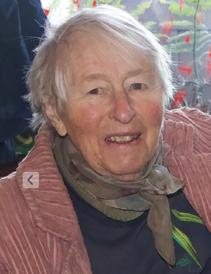
There is work to be done to ensure there are adequate resources to support a seamless system for patients and their carers, based on models that are working well in other jurisdictions.
Our first Politics in the Pub evening was a valuable initial opportunity for doctors to come together with politicians and candidates to express where the problems are with the ACT health system.
Our next Politics in the Pub evening will be happening on 24 July at AMA Federal offices in Barton, at 7pm. This is where we hope to get more information from candidates about the particular policies they hope to take to the next election. Mark it in your calendar; it would be great to have as many colleagues as possible along.
AMA’s national conference, AMA24 is happening on the Gold Coast from August 2-4. It’s an opportunity to reconnect with familiar faces, forge new connections and explore exciting opportunities. The conference will also mark the end of Professor Steve Robson’s term as Federal AMA President. AMA24 is open to all AMA members and non-members. It would be great to see you there.
The President, Dr Kerrie Aust, Board members and staff of AMA (ACT) extend their sincere condolences to the family, friends and colleagues of Dr Andrew Brook

A walk-through of the soon-to-open Critical Services Building at The Canberra Hospital reveals an impressive attention to detail when it comes to improving the patient’s journey.
AMA ACT was invited to tour Building 5 ahead of its official opening, which is scheduled for August. The patient-facing spaces are impressive, including the grandly decorated main entrance which features high ceilings and indoor gardens. The pleasant aesthetic is maintained throughout the hospital, with thoughtfully-designed children’s spaces, an outdoor courtyard that is accessible to bed-bound patients, light-filled waiting areas with views over the Brindabellas and colourfully painted ward rooms.
All treatment spaces in the hospital have super-bariatric

When it comes to staff’s experiences, there will also be improvements at the new facility. The building has been designed with separate patient flow, clinical flow and logistics flow. AMA ACT was shown the cardiac catheter lab, which is substantially larger than
outdoor areas, three overnight bedrooms with ensuites, and meeting rooms of varying sizes to cater for groups of 4 to 30.
A staff breastfeeding room is located on level 4, however AMA ACT is not satisfied that the small
Dr Aust said staff were rightly excited about moving into the new facility. “I think it will energise the hospital’s staff to commence work in this state-of-the-art facility.”
“Nevertheless, it’s not going to be perfect, and AMA ACT will continue to advocate with the Minister’s office to address the spaces for doctor connection and breastfeeding.”
Staff training and orientation for Building 5 will commence in July. AMA ACT would like to hear from members whether they feel the staff spaces are adequate. To get in touch email reception@ama-act.com.au

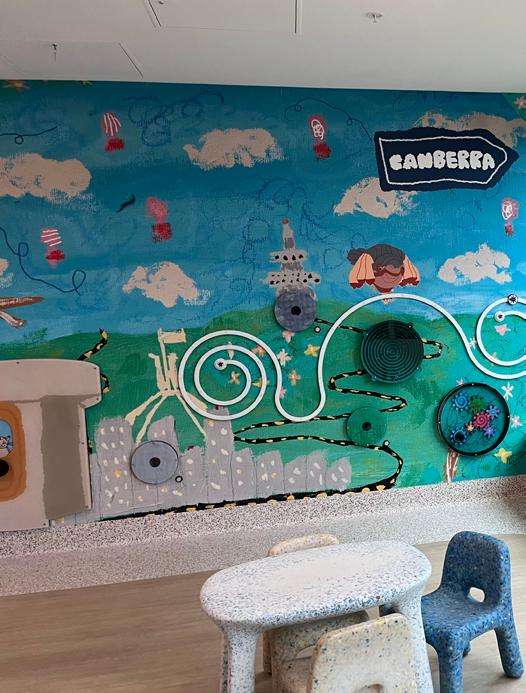
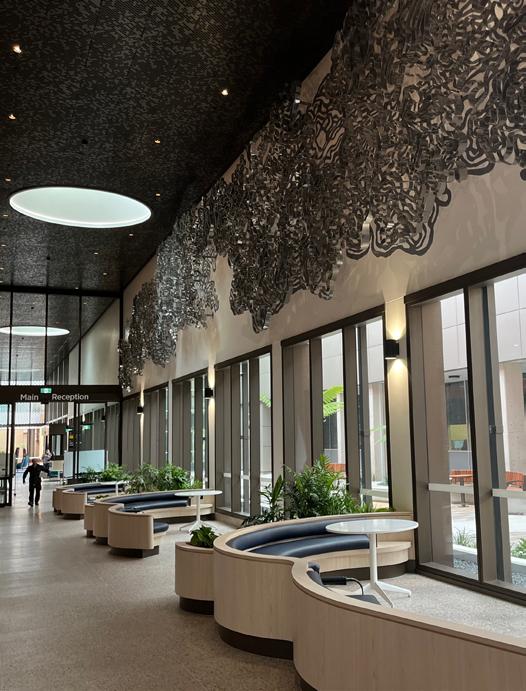

• 2 consulting rooms, 1 procedural treatment room, 1 crash emergency area
• Medium size space, adaptable for storage
• The “practice space” is currently on an annual rental lease basis.
• The lessor will be keen for a long-term rental tenure lease, if preferred
• Free parking space
• Mixed billing
• Fully computerised, including Best Practice Software
• Partnership opportunities, with view of buying
• Suitable for Canberra GP with established patient base
• Negotiable rates. $150/hr. guaranteed for the first 3 months
• Work hours to be negotiated

• Located in South Canberra Suburb, close to amenities (hospital, shops, eateries, cafes, petrol stations), plus easy access for emergency/rescue crew (ambulance, police, fire brigade)
• Fully equipped (including Tuttnauer Autoclave, Vaccine Fridge, Schiller Cardiovit AT-2 Plus, 2 Defibrillators, 2 Electric Examination Couches, 2 Standard Examination Couches, Welch Allyn Spirometer, AeroNeb Fortress Nebuliser, 2 Roller Stand Sphygmomanometers, 3 cuff-mounted Sphygmomanometers, 1 instrument table, one-drawer stainless steel trolleys, 2 photocopiers
• Worthwhile goodwill

‘It looks like we made it’: one year since the Calvary takeover
July marks a year since the ACT Government controversially acquired Calvary Public Hospital Bruce from its Catholic operators, renaming it North Canberra Hospital and transitioning the bulk of its 1800 staff onto contracts with Canberra Health Services.
So how’s it all gone? Dave Peffer, CEO Canberra Health Services and Dr Elaine Pretorius, who was until recently* General Manager of North Canberra Hospital sat down with Canberra Doctor to reflect on the transition.
CD: What’s the mood among doctors at North Canberra Hospital today?
Dr Elaine Pretorius: “The mood among medical staff seems generally good. We are feeling the pressure of activity at the moment, but we have worked very hard in being open and transparent. We have continued with our Medical Staff Society, but also added a Clinical Advisory Council, so there are lots of opportunities for the doctors to participate and have their voices heard, and that has resulted in a very positive feel.” “We’ve done a lot of work with the junior medical officers. Their voice is very much heard. I think they appreciate the emphasis we have on their wellbeing. We’re also very particular about our rostering and making sure they have some work-life balance.
We had two main aims when acquisition happened. That was to be sure that our patients were safe, and to be sure that our staff were safe and happy. And I believe that we have achieved both.
Dr Elaine Pretorius



CD: Has the culture changed since the takeover?
Dr Pretorius: “I’d like to say that it’s become an even more positive culture because we’ve amazed ourselves and everybody else in what we’ve been able to achieve. If you think about the enormity of the task, there’s a sense of satisfaction in being able to say: ‘It looks like we made it’.
“The thing that we haven’t got nearly enough credit for is passing accreditation. That gave us a ‘forged in fire’ feel. Accreditation happened in March, just nine months after the acquisition and with less than a week’s notice. They look at everything: infrastructure, how you manage contracts, policy and procedures, the accountability framework, performance measures. Having just been through acquisition and having a new governance structure, I think that was an enormous achievement that really pulled our teams together.
“Meeting accreditation was also very positive in building the relationships across the wider Canberra Health Services. That started forcing us to look to each other, to support each other, to start finding some of those benefits in being part of a wider system.”
CD: Has there been any movement on waiting times since the takeover?
Dave Peffer: “Organization-wide we have seen an unprecedented step-up in the demand – an 11% increase in activity through the emergency department in the last 12 months – something we hadn’t necessarily planned for or anticipated. It’s taken us to a level of throughput activity that the Territory’s never seen before.
“The acquisition has benefited the system’s ability to deal with the level of demand. Our ability to work within a network and manage demand across the system is improved. The timeliness of care has improved. It’s a first 12-months insight into what is possible in the years ahead.”
CD: What about elective surgery waiting lists?
Dr Pretorius: “We have seen some improvement in our wait lists, but that’s more to do with having the theatres up and running again after they were destroyed by fire in 2022. We are running more theatres than we did prior to the fires. We also opened a second endoscopy theatre.
“Where we have capacity we are pulling off the central, territorywide waitlist, which is one of the benefits of having a single system – we can allocate people
10 May 2023
ACT Health Minister Rachel StephenSmith announces the ACT Government will compulsorily acquire Calvary Public Hospital Bruce and commence planning for a stateof-the-art Northside Hospital on the site.
16 May 2023
AMA ACT holds an emergency meeting with Calvary doctors. Many say they feel shocked and disrespected over the acquisition.
to where the capacity is, whether that is staff or patients.”
CD: Can staff expect any changes to their roles, pay or conditions in the near future?
Dr Pretorius: “No, we aren’t planning any big changes when it comes to service delivery and the units. The changes that we will start to see are at a much higher level, around starting to reduce duplication in corporate services and in all of those support functions where you shouldn’t have two teams of emergency management across the system. “The future structure of the two hospitals is going to be very dependent on the Northside Hospital planning. We have gone out to get some consultancies to support us in the service planning and that will inform whether there’s delineation of services.”
CD: Has there been a change in reproductive health services available at North Canberra Hospital since the takeover?
Dr Pretorius: “Yes. There are no exclusions to any care that we deliver now. That would include post-exposure prophylaxis for HIV. It also includes post-exposure
31 May 2023
Enabling legislation is passed in the Legislative Assembly.
contraception. It includes termination of pregnancy. All of those are now services that are provided with no differentiation between Canberra and North Canberra Hospital.
CD: What new opportunities has the takeover brought for staff at North Canberra Hospital?
Dr Pretorius: “Canberra Hospital was always welcoming to Calvary staff, but now as North Canberra Hospital, we have a closer relationship. It’s much easier to pick up the phone and talk with one another.
“There is the opportunity to leverage off the amazing structures and resources that Canberra Health Services has. Being a big tertiary organisation there is the education and research structures, the opportunity to do some cuttingedge work, and the ability to participate in journal clubs and academic meetings in a more structured way.
“The planning of the new Northside Hospital is also going to be exciting for staff; being able to really think about what the territory needs and being able to shape how we deliver care. Having a new hospital will be fantastic because our hospital is in dire need of some love and attention.”
9 June 2023
ACT Supreme Court dismisses Calvary Health Care's bid to block the takeover.
3 July 2023
Calvary Public Hospital transitions to Canberra Health Services, under the new name North Canberra Hospital.
Continued from page 1 and mental health related appointments, for upskilling and data reporting.
The proposal received a muted response from the audience of doctors and practice managers. One practice manager, who compared general practice to an underfed and dying dog, suggested the Greens’ proposal would create additional paperwork and likely have a net zero impact on their bottom line. AMA ACT has asked the Greens to provide more details for the policy and ensure it is developed in consultation with doctors.

“Something we’ve been focusing a lot of policy effort on is that real connection between primary and tertiary care, and those connecting care pieces in the community as well, and enabling everyone to work to their scope of practice in partnership with the patient at the centre.”

Also present on the panel were Liberal party MLA, Leanne Castley, and independent candidates, Thomas Emerson, Dr (PhD) Vanessa Picker, Sneha KC and Peter Strong. A common theme throughout the night was doctors feeling their voices had not been heard by their elected representatives to date, whether it was regarding policies that fragment care, the challenges of running a financially viable medical practice, the need to invest in training junior doctors or the crucial need to protect doctors from burnout. Of course, all the candidates expressed their genuine commitment to listening to their constituents.

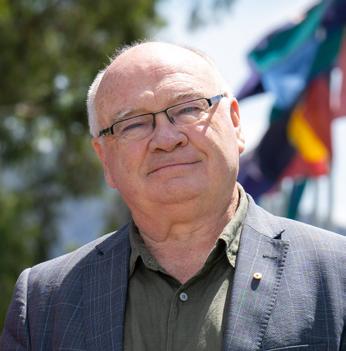
“I am a registered nurse and have worked in a GP practice for more than five years… The money the practices get is barely enough to run and employ staff. It would be a great start if we see some funding coming to GP practices.”

EMMA DAVIDSON
Member for Murrumbidgee (Greens) ACT Mental Health Minister
“I would love to see more of a culture of evaluation, and I think that if we start to follow the evidence we can also think about things that aren’t working and where we can re-orient and re-allocate funds from.”

“What would be nice in five years time would be to have people say, ‘Yeah, I’m happy with the health system’ – the workers, the doctors, the patients… We need influence to come from a strong cross bench, not from vested interests.”

LEANNE CASTLEY
Member for Yerrabi (Liberals)
“I would like to see a health system where everyone can access quality public healthcare and where people can really engage in good prevention and early intervention close to home.” “We need more integration and communication between the tertiary and primary health care systems and to make sure the systems we are putting in place are adequate for Canberra’s growing size.”
Public hospital performance in the ACT has been a subject of concern for many years, so AMA ACT was as pleased as anybody to hear Health Minister Rachel Stephen-Smith recently claim there had been “a significant improvement” in ED waiting times.
Some 63% of ED presentations were seen on time in the ACT between January and March, according to the latest performance report for ACT public hospital emergency departments. Ms Stephen-Smith drew a comparison with the 2022-23 financial year, when figures showed only 51% of ED presentations were seen on time.

“I would love to see a health system where people really feel like the system cares about them… that includes both the health workforce and the health system users.”
“These improvements show that the key investments and reforms being implemented across the ACT public health system are having a positive impact on emergency department performance,” Ms Stephen-Smith said.
However, there is an important caveat. Some of the 2022-23 data was collected before the rollout of the digital health record in November 2022. The ACT Health Directorate’s Data Analytics Branch explicitly warn in their latest report that it is “not valid” to compare current data with pre-DHR data as they have been drawn from different systems.
Nevertheless, Health Minister Rachel Stephen-Smith and Canberra Health Services CEO Dave Peffer say the numbers are likely to reflect a real improvement.
Speaking to Canberra Doctor, Mr Peffer cited the recent ED figures as evidence of the success of the ACT Government’s Calvary Public Hospital acquisition.
“The acquisition has benefited the system’s ability to deal with the level of demand,” he said. “Our ability to work within a network and manage demand across the system is improved.”
Comparison of data from this report against those from quarterly reports released pre-DHR is not valid as data would have been drawn from different source systems.
Quarter 3, 2023-24 Monthly Performance Report
different picture
The figures are dramatically different from the disappointing results for the ACT in the AMA Public Hospital Report Card. This year’s edition found a record low of 48% of emergency department visits were completed within four hours during 2022‒23.
Has the situation really improved, and improved as significantly as the ACT Government suggests? Is it coincidence that the ‘improvements’ began just as the DHR was switched on? Only time will tell. One thing’s for sure, the tirelessly hard-working ACT public hospital staff deserve some good news.
Dr Katherine Gordiev Orthopaedic Surgeon


Over 25 years experience in Orthopaedic surgery, including 19 years in Canberra working in private and public practice.
Arthroscopy, Reconstruction, Replacement and Trauma of the Shoulder and Upper Limb. Includes arthroscopic and open shoulder stabilisation, shoulder replacement, rotator cuff repair, elbow, wrist and hand surgery.
Ph: 02 6260 5249 | katherinegordiev.com.au Suite 7 National Capital Private Hospital, Garran 2605
Well-known local GP Dr Kerrie Aust, took the reins as AMA ACT president in May, alongside a new board which includes several firsttime members and a mix of junior and senior doctors from public and private practice. We asked them to share a little about themselves.

Name: Dr Clair Bannerman
Medical specialty: Junior Medical Officer
Non-medical specialty: All things sports - running, skiing, cycling, bushwalking, team sports (I'm currently into touch footy); art; gardening; and hanging out with my three wonderful kids and husband
Undergrad degree: Science (BSc and Masters); Education (Grad Dip and Masters)
Med school & year group: ANU, 2023
Favourite place in Canberra: All the hills – Red Hill, Black Mountain, Mount Ainslie, Mount Taylor – we have such amazing bushland at our doorstep
Favourite chocolate: Dark
Don’t get me started on… how much we have to learn from Aboriginal and Torres Strait Islander people to better understand the interaction and interdependency between health, environment, education, community and culture.
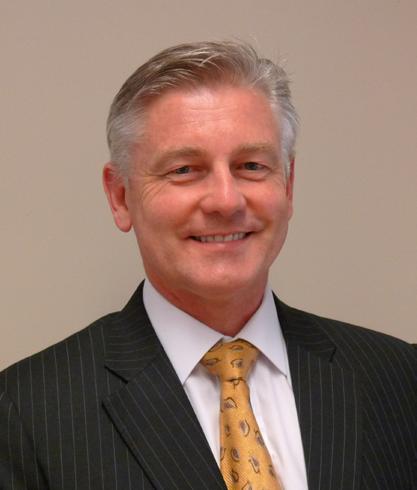

Name: Dr Marisa Magiros
Medical specialty: General Practice
Non-medical specialty:
Solving jigsaw puzzles
Undergrad degree: MBBS (Hons) BMedSc (Hons)
Med school & year group:
University of Sydney, 1997
Favourite place in Canberra: I’m a relatively new "Ken Behren" but I’m loving exploring all the bushlands.
Favourite chocolate: Old Gold Mint Creme Slices and Darrell Lea Whipp peppermint
Don’t get me started on… creating longevity in the medical workforce. The new normal is doctors with a mixed portfolio of roles including patient-facing clinical work AND simultaneous nonclinical work which may include teaching, research, governance, medical writing, policy, regulation or even something non-medical.
Name: Prof Iain Dunlop
Medical specialty: Ophthalmology
Non-medical specialty: Sailing, history
Undergrad degree: MBBS Hons
Med school & year group: University of Sydney, 1980
Favourite place in Canberra: The lake
Favourite chocolate: Belgian dark
Don’t get me started on… mobile phone and email etiquette.

Name: Dr Jason Gluch
Medical specialty:
Anatomical Pathologist
Non-medical specialty: Golf, food, wine
Undergrad degree: MBBS
Med school & year group: University of Queensland, 1994.
Favourite place in Canberra: Royal Canberra Golf Club, not just for the golf, but also the vistas, trees and surrounds. You could consider it a great walk spoiled by intermittent searching for a ball.
Favourite chocolate: Cherry Ripe or Moro.
Don’t get me started on… MBS, lack of indexation, coning rules and competitive neutrality.

Name: Dr Betty (Xiaoting) Ge
Medical specialty: General Practice
Non-medical specialty: Reading cook books and contemplating on next cooking project before giving up, hiding in bathroom and dodging my own children
Undergrad degree: Nursing and Psychology
Med school & year group: ANU, 2018
Favourite place in Canberra: Beijing Garden and Nara Peace Park
Favourite chocolate: I will have any chocolate any day Don’t get me started on… positive working culture for doctors, gender equity in medicine, building stronger general practice for future Australia.

Name: Dr Andrew McMahon
Medical specialty: General Practice
Non-medical specialty:
Long distance driving
Undergrad degree: Bachelor of Medical Science
Med school & year group: Griffith University, 2017
Favourite place in Canberra: Hillside on Regatta Point sitting overlooking the Captain Cook memorial fountain (when it's on).
Close second would be National
Botanic Gardens rainforest walk.
Favourite chocolate:
"The edible kind". I am a true believer in equality and will take chocolates in all forms!
Don’t get me started on… “Why did I move to Canberra from the warm and sunny Gold Coast?” The simple answer... I like it here! The longer answer involves a tale about career indecision, failed travel plans, the COVID pandemic and about me liking snowboarding and hiking.

Name: Dr Kerrie Aust
Medical specialty: General Practice
Non-medical specialty: Cuddling my Labrador
Undergrad degree: Bachelor of Australian Studies and then Bachelor of Science
Med school & year group: ANU, 2014
Favourite place in Canberra: The Arboretum

Name: Dr James Miller
Medical specialty: SRMO
Obstetrics and Gynaecology
Non-medical specialty: I asked my three-year-old what I’m good at –her answer was “letters” so I’ll go with that. My back-up non-medical specialty is making excellent homemade baked beans.
Undergrad degree: Bachelor of Physiotherapy (Hons)
Med school & year group: ANU, 2021
Favourite place in Canberra: Anywhere with my wife and kids Favourite chocolate: Snickers Don’t get me started on… government promises that are meant to give the appearance of action but deliver little in terms of improving health services or outcomes – which tend to surface close to an election.

Favourite chocolate: Cadbury Marvellous Creations with Popping Candy
Don’t get me started on… the importance of supporting doctor wellbeing. Patients benefit when doctors have professional fulfillment, adequate time to do their work, support for their ongoing learning needs and connection with colleagues.
The stage is set for junior doctors around the country to claim back tens of thousands of dollars in unpaid wages, after a class action in NSW reached a settlement of almost $230 million – the largest underpayments settlement in Australian legal history.
Lawyer, Hayden Stephens, whose firm represented NSW junior doctors together with Maurice Blackburn Lawyers, said the case highlighted the chronic issues of unrecorded overtime and dangerous working conditions for junior doctors.
“It lays the groundwork for other actions around the country to resolve, including in Victoria and the ACT,” Mr Stephens said.
“This landmark settlement in NSW will be persuasive
because it demonstrates to the health authorities involved in litigation around Australia that these matters can settle and that moving forward, hospitals can put in place a clear and better process to ensure doctors are paid appropriately for their overtime.”
Two months after the NSW class action was settled, NSW Health also reached a settlement with the Australian Salaried Medical Officers Federation NSW guaranteeing improved conditions for NSW JMOs in the Public Hospital Medical Officers (State) Award.
In return for the Award changes, ASMOF NSW agreed to discontinue legal action it had commenced on behalf of 62 current or former JMOs who claimed they had been underpaid their award entitlements.
NSW Health was already preparing for major changes to the award after overturning the former government’s wages cap and wage suppression measures, which prevented NSW public sector workers from meaningful improvements to wages and conditions for the last 12 years. Going forward, NSW doctors will be able to participate in enterprise bargaining, as they do in other jurisdictions together with their industrial relations partners.
In the ACT, the junior doctors’ wage theft class action against Canberra Health Services and Calvary Hospital is due for mediation between 22 July and 17 August. Led by Hayden Stephens and Associates, the action is open to any junior doctors who worked as JMOs in the ACT since 2016, and who worked unpaid overtime. If successful, it could result in payouts ranging from a few thousand to several tens of thousands of dollars depending on the doctors’ individual circumstances.
Do you think you may have been underpaid? AMA ACT is here to help. Our senior industrial relations advisor, Greg Schmidt, is happy to give confidential advice about how to navigate the system, and can also advise whether collective action may be beneficial. Contact Greg at industrial@ama-act.com.au
The draft enterprise agreement (EA) for doctors working in the ACT Public Sector has many good aspects, but the rubber hits the road when it comes to the Government’s disappointing pay offer. As a result, AMA ACT has recommended doctors reject the agreement.
After more than two years of regular negotiations, the proposed ACT Public Sector Medical Practitioners Enterprise Agreement 20232026 recently became available for consideration, with voting open from 26 June.
The proposed agreement would cover all doctors in the public hospital system as well as those working elsewhere in ACT Government agencies, with a nominal expiry date of 31 March 2026.
Employer superannuation contributions would be lifted slightly above the minimum Superannuation Guarantee rate for much of the life of the agreement. The agreement would provide meaningful increases in the amount of paid birth leave and the availability of primary care giver leave for new parents. Access to personal leave and some other paid leave types would be improved.
Work would also be done on managing hours of work for medical practitioners with improvements to notification of rosters and access to ADOs. New procedures for managing on-call and recall duties for senior doctors would be trialled.
New arrangements have been agreed for cashing out ADOs – a particularly frustrating matter for JMOs who’ve previously been trapped between difficulty getting ADOs and a cap on how many can be accrued.


In a highly unusual manoeuvre, Calvary Health has lodged a counter claim against the lead applicant in the ACT class action. Calvary assert that if they are required to repay Dr Ying Ying Tham her overtime, they will in turn seek that she repays them because she did not lodge a claim at the time.
Mr Stephens said: “It’s an extraordinary legal manoeuvre and one that I’ve not seen in an employment action. It’s disappointing and, while ultimately a matter for the court, I don’t believe has good prospects.
“I think this tactic underestimates the quiet resolve of junior doctors and their determination to push for real change in their workplace.”
An unwelcome aspect of the proposed agreement is the Government’s pay offer. Despite offering a combination of four flat rate increases and five percentage increases to salaries across seven different dates, the quantum of salary increase on offer is disappointingly low. The net effect of the Government’s pay offer across a 3.5 year period would be the same as a consistent increase of 3.7% applied annually to an Intern’s salary rate. The pay outcome for a Senior Specialist is even worse – the Government’s pay offer provides the same outcome as an increase of 2.24% annually. For comparison, the last two MPEA Agreements provided increases of 2.72% per annum, for all classifications, in an environment of lower inflation.
AMA ACT recommends that medical practitioners vote to reject the agreement in the expectation that this will compel the ACT Government to make a more attractive offer.

To learn more about the ACT class action and register your interest visit haydenstephens. com.au/actdoctors-in-training
At TMS ACT, our clinic specialises in treating refractory depression. We offer Transcranial Magnetic Stimulation (TMS), a cutting-edge therapy now covered under the Medical Benefits Scheme. Eligible patients can receive a substantial rebate for this treatment. Additionally, we are a registered Spravato (Esketamine) clinic and have expanded our services to offfer this treatment.
We welcome new referrals, and for those seeking the Medicare rebate for TMS, patients must meet the following criteria for Treatment Resistant Depression:

Have failed to respond to an adequate trial of two or more antidepressants (of different classes) unless contra-indicated

Have also undertaken psychological therapy unless inappropriate
Referrals for an initial assessment can be sent to Dr John Saboisky or Dr May Matias via our website or by email.
Around 20% of Australian women experience chronic pelvic pain, but in Canberra the number of gynaecologists who subspecialise in this area can be counted on just one hand.
Thankfully, a new clinic is helping patients with pelvic pain understand their symptoms and give GPs greater confidence in managing their condition.
Sexual Health and Family Planning ACT (SHFPACT) is one of 22 sites around the country to have received funding to establish a new Pelvic Pain and Endometriosis Service as part of an initiative of the Albanese Labor Government.
Dr Tara Frommer, senior medical officer and the Pelvic Pain Clinical Lead at SHFPACT and a GP in Garran, has been instrumental in setting up the service, together with colleague Dr Martina Mende, and says she understands the struggle fellow GPs have in dealing with patients with pelvic pain.
“GPs want to make sure patients feel validated, but they’re also aware that early surgery isn’t always the best course of action,”
Dr Frommer said. “That’s where I think our clinic is really valuable –

Around half of patients with pelvic pain have an underlying diagnosis of endometriosis.
rather than just referring a patient to an already busy gynaecologist, GPs have this extra resource, where they can send a patient for a full discussion of their symptoms and a holistic overview of the options available to them."
Dr Frommer said while around half of patients with pelvic pain have an underlying diagnosis of endometriosis, that does not mean the other half were “making it up”.
“For a majority of those patients with chronic pelvic pain, regardless of whether they have endometriosis or not, they respond really well to medical management including hormonal modulation, and a multidisciplinary approach which might include pelvic floor physiotherapists and dieticians.”
Patients can be referred to the service by their doctor or can self-refer. All patients have an initial fully-funded nurse appointment for 45 minutes to an hour, where they have the opportunity to discuss all of their symptoms and receive some basic information about pelvic pain. From there, the patient has the option of booking an appointment with one of the service’s doctors, which is privately billed. Sometimes management is initiated at that appointment; other times it is delayed until a follow-up appointment.
Dr Frommer suggested that
even GPs who thought their patient could benefit from surgery might consider referring them to the clinic for “multi-modal optimisation”.
“There’s quite a lot of optimisation we can be doing for a patient while they’re waiting to see the gynaecologist,” she added. “It’s really important we don’t leave patients suffering while they’re on the waiting list.”
Network of support
Dr Frommer has been leading work to strengthen a network of health practitioners in the pelvic pain space in the ACT, including pelvic floor physiotherapists, GPs, psychologists, dieticians, gynaecologists, dermatologists, vascular surgeons, nurses and osteopaths.
“We have relationships with many allied health providers and can guide people to whoever is most appropriate depending on their circumstances,” Dr Frommer said. “It’s really important that we can hold these patients and then pass them on so that they continue to be supported without falling through the cracks.”
If clinicians are interested in joining the ACT Pelvic Pain Network to strengthen collaboration and referral pathways please email pelvicpainclinic@ shfpact.org.au
Members who employ staff on Award wages should be aware that Modern Award minimum pay rates will be increased by 3.75% effective from the first pay period commencing in July 2024.
Employers must ensure at all times that they pay staff members at or above the appropriate minimum pay rate.
Employers who already pay above-award pay rates may not need to pass on the full increase, provided that the actual paid rate complies with the legal minimum requirements.
AMA members have voted overwhelming in favour of changing the Federal AMA constitution to enable AMA Tasmania to become a branch organisation.
More than 2600 members voted to support changes to the AMA Constitution at the Federal AMA’s Annual General Meeting on 22 May. The vote
was a landslide result with more than 95 per cent of members who voted giving a resounding yes to the proposed changes.
Tasmania’s decision to seek to become a branch of Federal AMA followed lengthy consultation with AMA Tasmania members who overwhelmingly supported the change.
Federal AMA President, Professor Steve Robson told members the result was a strong vote of confidence in the AMA as a united organisation committed
to a common cause.
“I’m particularly pleased in the turn out because these changes are about you, our members,” he said. “They are about ensuring we remain a powerful and trusted voice for you, well into the future, and continue to achieve incredible results from our advocacy."
“They are about excellence in governance. And they are about supporting our smaller state and territory AMAs, most particularly our friends and colleagues in Tasmania.”

Members who employ staff under the Health Professionals and Support Staff Award, the Nurses Award, or another relevant Modern Award, can request an updated copy of their Award from industrial@ama-act.com.au. PAGE 14 QUIZ ANSWERS: 1) It’s true! But only if the 1st 3rd and 7th words have a capital letter! Look up the monkey, the bison, the buffalo, the town in upstate New York, and the history of bullying. Not to mention very strange etymologists! 2) Vacuum cleaner 3) Emus! 4) True – it was illegal as the government did not want them to be lonely 5) Lady Gaga 6) Malcolm Fraser 7) Paul Keating 8) Video Killed the Radio Star by the Buggles 9) The Jazz Singer 10) Coca-cola AMA Secretary General Natalia Centellas with AMA President Professor
Every family that joins the Canberra Girls Grammar School (CGGS) community is unique. As such, the school is positioned to provide world-class educational, cocurricular and pastoral consistency to support each family’s varied circumstances.
Key to this are our Boarding House options, with weekly boarding a popular solution for busy, modern-day families.
For a century, generations of students from across Australia and the globe have experienced that at CGGS, we are creating a world where young people never stop believing that anything is possible. Founded in 1926, the school opened the doors with just 10 students,
four of which were boarders. Established by trail-blazing women, CGGS continues to champion fearless leadership, visionary thinking, unwavering resilience and rigorous learning for life.
In recent years, an attractive offering for families working in health and medicine, defence and other jobs involving extended commutes or demanding work hours has been CGGS’ weekly boarding option. Weekly boarding provides students with the skills to develop greater independence and life-long friendships within a supportive, caring environment and provides families with assistance to ensure time spent together is quality time. Students reside at the school’s Boarding House on Monday to Thursday night, and then spend Friday to Sunday at home. This balance has proven to provide the sought-after consistency and predictability some families need.
“We understand the often transient and unpredictable nature of work and life for some parents and carers. Whatever your circumstances, CGGS provides structure, consistency and
reliability to your child’s educational experience, and promotes a good balance between school and home life,” says Robin Bussenschutt, the Director of Boarding.
Known affectionately as the BoHo, our Boarding House was the first in the ACT, and remains the only exclusively female option for boarders in the region. Since 1926 students have enjoyed our charming building, on a picturesque corner of inner Canberra, with a calm and consistent educational environment, affording them the time and space to flourish. It’s within these historic walls that generations of women have learnt and led, navigated change and challenges and formed cherished bonds to emerge empowered and independent.
“At the BoHo, each boarder wakes up to a community that feels connected. It’s a femalefocused home where kindness and compassion shape every interaction, and one in which everyone belongs. Our boarders come from all corners of the globe, so naturally, diversity is celebrated. Respect and harmony
are championed and each individual is known and valued. With expert staff on hand and access to our school facilities and programs onsite, this is a place where students can lean into and hone their individual strengths,” says Terrie Jones, Principal.
At its core, the Boarding House ensures the academic commitments and health and wellbeing of weekly boarders are held in utmost importance. “Academic focus is intrinsic to our boarders’ daily lives, well beyond when the school bell rings. Not only do they receive the highest quality education during the day, but our boarders benefit from professional academic support through access to tutors afterhours,” explains Robin. “All facets of a boarder’s wellbeing are anticipated, too— our professional Pastoral Care team are interested, involved and well-versed in adolescent needs, homesickness, friendship dynamics and study considerations.”
For weekly boarders, life at the BoHo also provides an uninterrupted, accessible experience, and one that is
unparalleled for their holistic development. All boarders have regular access to the senior school facilities, including the school library, the netball and tennis courts, oval, gym and indoor heated pool. Boarders with a passion for music can store and practice their instruments in the onsite Music Centre, which includes two pianos.
The Boarders’ Sitting Room is a space to relax and socialise, with access to the courtyard, lounge room, a TV, craft supplies, board games and a small kitchenette. And the sweeping ceilings of the 1920’s Dining Hall provide a charming, nostalgic experience at meal time every day.
Discover how CGGS creates a genuine culture of care through a profound and seamless homeand-school-life connection, so that your daughter can embrace her independence and become resilient, capable and courageous to confidently navigate the path ahead.
Read more about the CGGS boarding experience now. Visit: cggs.act.edu. au/boarding
Email: enrolments@ cggs.act.edu.au


Discover a 100-year spirit of educational excellence, connection and opportunity. Our female-focused boarding experience in the heart of the nation’s capital empowers you to lean into your strengths and become your best self. Find out more.
From staring or leering, to unnecessary familiarity, to brushing up against a team member in a confined space, unwelcome sexual conduct can make work an incredibly uncomfortable place for the person in their gaze.
Yet, those on the receiving end sometimes feel powerless to do anything about it, especially when the behaviours are subtle, and even more so when the offender is their boss. That’s why it’s so important to note that workplaces have a positive duty to actively prevent sexual harassment in connection with work.





$140,000 in respect of the sexual harassment. This compensation award reflects the increasing compensation being awarded in sexual harassment cases.
All doctors are expected to demonstrate respect for colleagues and patients in the workplace under the Medical Board’s Good Medical Practice Guidelines.
Our online booking system provides immediate access to available appointments 24/7 visit: www.strategicpsychology.com.au
What constitutes workplace sexual harassment?
Workplace sexual harassment is unwelcome conduct of a sexual nature that makes a person feel offended, humiliated or intimidated where that reaction is reasonable in the circumstances.
It may include:
inappropriate jokes
staring or leering
unwanted touching
unwanted comments
unnecessary familiarity
unwanted invitations
Sexual harassment is not sexual interaction, flirtation, attraction or friendship which is invited, mutual, consensual or reciprocated.
The legal test for sexual harassment in the federal Sex Discrimination Act has three essential elements:
1. the behaviour must be unwelcome;
2. it must be of a sexual nature;
3. and it must be such that a reasonable person would anticipate in the circumstances that the person who was harassed would be offended, humiliated and/or intimidated. Whether the behaviour was unwelcome is a subjective question and will depend on the response of the particular person alleging sexual harassment. It is irrelevant
that the behaviour may not offend others or has been an accepted feature of the work environment in the past. The intention of the alleged harasser also doesn't matter.
An objective test (i.e. a reasonable person test) is then applied to determine whether a reasonable person would have anticipated the possibility that the person harassed would be offended, humiliated or intimidated by the behaviour.
A recent decision which considers each of these elements in detail is Taylor v August and Pemberton Pty Ltd [2023] FCA 1313 (31 October 2023). In that case, the alleged sexual harassment consisted of a male manager giving a female employee numerous gifts, slapping her on the buttock, making various comments to her about her appearance verbally and in text messages, declaring his affection for her and raising the matter again after she had told him she was not interested. After considering the evidence and applying the relevant test, the Federal Court was satisfied that some of the conduct amounted to sexual harassment and awarded
Workplace sexual harassment and creating an unsafe workplace for colleagues is unacceptable under multiple federal and state laws about sexual harassment in employment. There are substantial fines for breaching these laws. It may also result in dismissal and/ or criminal charges as well as having professional consequences on a doctor’s registration.
Doctors should also be aware that they have an obligation under the Health Practitioner Regulation National Law to report “relevant events” to the National Board. “Relevant events” for the purpose of the Act include having been charged with an offence which is punishable by imprisonment of 12 months or more.
In addition, all Australian organisations and businesses have a positive duty under the Sex Discrimination Act to actively prevent sexual harassment in the workplace or in connection with work, rather than responding only after it occurs. This includes doctors who are sole traders or self-employed, as well as those who own and operate medical practices.
Medical practices must empower their teams to create safe workplaces that are effective at preventing and responding to sexual harassment. The best place to start is involving everyone in undertaking a comprehensive risk management process at the practice.
To get started go to safeworkaustralia.gov.au/doc/modelcode-practice-sexual-and-gender-based-harassment



Leaving an established medical career path can be challenging and isolating, but there is peer support available to those who take the risk.
I recently attended the fifth Creative Careers in Medicine Conference, ‘Meet me in the Mediverse’, which brought together doctors pursuing nontraditional careers in medicine, including non-clinical work and indirect patient care.
One of the things I love about this conference is how it normalises the ‘alternative’ medical careers
that are actually becoming more mainstream and acceptable. There’s a growing community of doctors in this space now, including a CCIM Facebook group of more than 21,000 members.
The main take-home for me is that there are many ways to be a doctor and provide healthcare, and each doctor needs to take steps toward their own fulfilment if they are to be in the race for the long-run.
Among the many nuggets of conference gold, I’ve distilled five of my favourites, with thanks to the wonderful presenters.
1. Keynote speaker Dr Ben Bravery – author of The Patient Doctor – gave an inspiring talk
about his journey from being a zoologist to a doctor after developing metastatic bowel cancer at 28-years-old. Though in many ways he received exceptional care, he was not being cared for on a human level. His take home was to not just teach about what illness ‘is’ but about what it feels like.
2. Dr Carlo Bellini spoke about evicting imposter syndrome. Don’t trust your self-doubt; trust your selfagency. Get in the driver’s seat of your own life. Turn
off emotional auto-pilot and choose your behaviour.
3. I loved Dr Sandro Demaio’s four questions to ask when making career decisions. These were: Can I make more impact here or there? Could someone else do this job as well or better than me? Will I be working for someone who will invest in me and help me grow? Will the culture allow me to bring my whole self?
4. Dr Jana Pittman had great advice to help doctors not feel overwhelmed: Diarise and prioritise weekly and
Children can now receive Hospital in the Home services in the ACT and surrounding region for a limited range of conditions including cellulitis, osteomyelitis, UTIs and pneumonia.
The Child and Adolescent Hospital in the Home service has been up and running since February and has so far provided care to almost 60 children, including IV antibiotics and post-operative wound dressing that would usually require an inpatient stay.
Ms Shannon Reakes, Acting Assistant Director of Nursing, Paediatrics, said it’s been a joy to see the long-planned service come to fruition.

and their own family in their own space, and this really helps with their recovery,” Ms Reakes said.
“I’ve seen the biggest benefits to families with children with complex health needs,” she added. “It can be a big challenge for families to manage the health needs of a sick child while also looking after other children in the family and getting to work, and so it takes the pressure off to not be travelling in and out of the hospital all the time.”
trust that you’ve done it well and don’t need to check until the day before.
5. There was a very robust panel discussion about the rapidly expanding single issue private telehealth services versus telehealth integrated into traditional community general practice. The lasting impression was that legislation and regulation need to catch up with the entrepreneurial models. Thanks to the panel presenters Dr Amandeep Hansra, Dr Jo Sharp and Dr Darran Foo
CA-HITH eligible conditions
Management of minor skin conditions
Oximetry
Wound dressings, including burns not requiring medical review
CVAD Care
Medication administration via CVAD/IM/SC within the following criteria:
Low risk medications/procedures
Maintenance dosing (not including induction) Infusions
<60minutes duration
Initial management of Enteral Feeding (postinpatient admission)
NG/NJ
“It’s something we’ve talked about in paediatrics over the years for quite some time, but it’s been a challenge to get it up and running because of the competing priorities that come with running a busy inpatient service,” she said. “I’m very proud of our team.” The service has already received strong positive feedback from families, Ms Reakes said.
The service currently has 6.76 full time equivalent nurses. It can take referrals from any part of the hospital, or general practice, however initially only a limited set of conditions are eligible (see box).
“Children are so much more relaxed when receiving their care at home, where they can still play and interact with their own toys
It is hoped the service will lead to a reduction in patients’ length of stay at the hospital, freeing up hospital capacity without compromising health outcomes.
TPN
Gastrostomy
Administration of Factor products via CVAD
Cellulitis
Urinary Tract Infections

Seasonal affective disorder, SAD, is sometimes spoken about in the medical literature as a type of depression that occurs at certain times of year –typically in the colder months.
Yet while it’s certainly a common enough phenomenon here in Canberra that as the winter chill bites, moods can dip, the SAD label is profoundly unhelpful.
In almost two decades of clinical practice as a psychologist, no one has ever come to see me for seasonal affective disorder alone. A person already experiencing mental ill health is more likely to be knocked around by seasonal factors such as the shrinking of daylight hours, cold temperatures and the arrival of end-of-financial year, but these things are compounding factors, rather than a cause of illness in itself.
Officially, the physical ‘symptoms’ of winter-onset SAD are things like oversleeping, craving unhealthy foods, gaining weight and feeling tired or lacking in energy.

Managing these ‘symptoms’ means changing our behaviours to do the opposite of what ‘winter’ would ask us to do. Less comfort food, less couch; finding new modes of exercise that are comfortable in the cold, being proactive about getting outside in the daylight hours, staying connected.
Beyond that, advice would include limiting alcohol and taking vitamin D supplements and in severe cases, considering light therapy, psychotherapy and antidepressants.
There is a cognitive component to SAD, however my experience has been that unhelpful cognitions do not specifically occur in isolated
months each year but rather are present throughout the year.
No label needed
If this all sounds like the bleeding obvious, perhaps it’s because what has come to be known as SAD isn’t really a disorder at all. In fact, it’s quite normal for our behaviours and moods to change with the seasons and sometimes that requires us to be more intentional about how we spend our time and what we consume.
The SAD acronym and the language of ‘disorder’ can create negative expectations in a person, which can be a very powerful driver of behaviour. While it’s worth patients being aware that they may sometimes feel lower in the colder, slower months, it’s also worth knowing it’s normal. Those who don’t feel like there’s something wrong with them are more likely to be able to adapt their behaviours, to help lift their mood.

DR DIANA TOLMIE
Senior Lecturer, Professional Practice Queensland Conservatorium Griffith University
Medical orchestras can be found around Australia – for example The Australian Doctor’s Orchestra and the Queensland Medical Orchestra.
Additionally, many community ensembles and choirs count medical workers within their cohort. It begs the question – is there a link between medicine and music? And perhaps more importantly, does learning a musical instrument make you a better doctor?
My national study of over 300 participants investigated the transferable skills of those who had either worked as a musician then left to pursue another profession; worked a musical and non-musical dual career; or been musically trained but never pursued a musical career. From this, I distilled 21 participants who were active or recently retired medical professionals hailing from all states except Victoria and Tasmania. One worked in both professions, one was a former musician-turned-doctor and the rest had enjoyed intermediate to professional-standard training, of which the majority still played music as a hobby.
Participants cited a range of skills they had gained through music training, including creativity, analytical thinking, communication and leadership, flexibility/adaptability, resilience, autonomy/self-direction, teamwork/collaboration and professionalism. All doctors were very articulate in explaining how the impact of music learning and creative performance transferred to dayto-day medical employment.

Music practice reinforced self-discipline, patience and perseverance, and was linked with being able to consume vast amounts of information while still paying attention to detail. Choirs, bands, orchestras and other ensembles led to professionalism, “teamwork skills and appreciation of others’ diverse strengths and weaknesses”, plus flexibility –“instinctively knowing when it’s appropriate to take the lead and when it’s better to support”. For some, working in smaller quartets taught them “how to deescalate issues and work better in teams”. Music exams had set them up “for vivas in medical school and surgical training”. Performing solo was considered to promote confidence that transferred to public-speaking, working under pressure and delivering complex diagnoses.
One doctor described how the fundamental value of medical work was made more meaningful through music: “music has given me the ability to embrace nonscientific views of humanity, and the meaning of joy and suffering”. Another wrote: “Being able to understand the emotions behind music allows a degree of empathy with my patients and colleagues.”
Many of these doctors were in, or aspiring for, leadership roles and agreed this stemmed from holding senior positions in bands and orchestras.
Why did these doctors not become musicians? Many
described how they simply had an innate calling for medicine. When asked what they loved about their profession, common answers were “helping people”, “it is intellectually stimulating” and “it’s a stable job”. It was not this apparent instability that deterred most doctors from a music career – more so a lack of confidence in their own ability. None had regrets about their music education. When asked what they loved about music, many cited its power for healing – how it helped them manage their mental health and workplace stress, its collaborative possibilities, and that they could share their music with others (one describing playing carols for the hospital patients each Christmas).
It has long been recognised that learning a musical instrument restructures the brain, creating more neuronal matter and therefore brain connectivity, and my own research strongly supports this. Learning music lays the foundation for the essential soft skills required in the workplace and has ongoing benefits throughout one’s career.

DR JUSTIN PIK
Neurosurgeon, Capital
Neurosurgery in Garran
A recent current affairs program made worrying claims about the safety and efficacy of spinal surgery.
The ‘Pain Factory’ episode on ABC’s Four Corners highlighted many adverse events people living with chronic musculoskeletal pain experienced when undergoing spinal fusion and spinal cord stimulator surgery to manage their pain.
However, while the episode raised some valid concerns, it failed to highlight the benefits of spinal surgery when it is practiced appropriately and in the right patients. For doctors wondering what’s right for their patients, here are some questions worth asking.
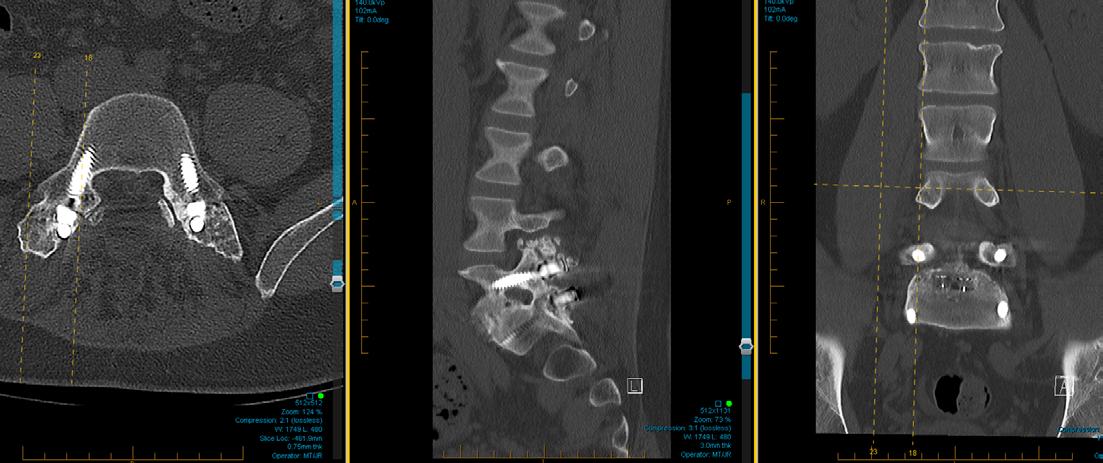
Spinal surgery is highly effective for relieving patients suffering from radicular pain, ie. pain due to nerve compression. The hallmark of radicular pain is radiating pain into a limb, following the distribution of the nerve that is compressed. Typically, severe radicular pain affects a limb and not purely the axial spine. In severe cases of radicular pain, there are frequently other associated neurological symptoms such as altered sensation and weakness in the distribution of the affected spinal nerve.
Surgery performed for axial spinal pain, ie. back pain or neck pain in the absence of radicular pain, rarely provides satisfactory pain relief. The exception would be the rare patients who have a well-localised
abnormality, eg. pars defects or spondylolisthesis, confined to one or two spinal segments, consistent with this being the source of their pain and with the rest of the spine being completely normal. Surgery for axial spinal pain, without radicular pain, in patients with multi-level spinal degeneration is consistently ineffective.
Is the imaging being viewed in context?
Modern spinal imaging techniques are very sensitive but not very specific. Population studies have demonstrated the high incidence of degenerative changes in the spine seen on MRI, even in completely asymptomatic individuals. A lack of appreciation of this fact often leads to unhelpful and ineffective spinal operations in a bid to treat a ‘disc bulge’ or a ‘degenerative disc’
seen on MRI. The basis of good medical practice remains taking a thorough history, performing a physical examination and only then interpreting the results of any investigations in light of the clinical presentation.
Some painful degenerative disorders have a very favourable natural history. Patients with severe radiating leg pain from lumbar disc herniation or severe radiating arm pain from cervical disc herniation frequently experience resolution of the severe pain within the first 6-8 weeks of symptom onset. Surgery should be reserved for patients who do not demonstrate this natural spontaneous recovery over the expected period.
Is this a job for spinal fusion, decompression or for both?
Spinal decompression is designed to alleviate radiating limb pain by decompressing the affected nerve root. These procedures are highly effective for relieving radicular pain. Adequate decompression sometimes requires removal of normal structures, eg. facet joints,
that contribute to spinal stability. In these cases, fusion may become necessary to achieve satisfactory nerve decompression and to reduce the risk of progressive postoperative spinal deformity which could lead to painful symptoms. Besides degenerative conditions, spinal fusion may also be required for stabilisation of the spine due to certain types of spinal fractures, major vertebral tumour resection or certain types of congenital spinal disorders.
What is the patient's expectation?
A spinal fusion, even technically satisfactory, never returns the spine to a perfectly normal state. Therefore, the expected outcome following a spinal fusion is some degree of ongoing pain and discomfort. If patients expect 100% pain-free full range of spinal movement following a spinal fusion, then they will certainly be disappointed even if they experience significant improvement in their preoperative symptoms. That is not to say however, that a spinal decompression is inherently better than spinal fusion. They are different tools for different jobs.

ANNA SMITH
CEO & Director of Clinical Services
Deakin Private Hospital
You might have seen job ads recently for Deakin Private Hospital, a new private mental health facility on Canberra’s Southside, adjacent to the Mint in Deakin.
Who runs it?
iMH Deakin Private Hospital is a joint venture between Amplar Health and Aurora Healthcare Australia and opened in March 2023. It is the first iMH Hospital, with another opened in January 2024 in Sydney and a third later this year in Brisbane.
Why did iMH decide to set up in Canberra?
There is a huge demand for mental health services in Canberra and surrounding regions. The iMH model provides the local community access to premium mental health services without the need to travel interstate. Our flexible pathways accommodate inpatient, day attendance, community-based

and in-home treatment, with a focus on continuity-of-care.
Who’s it for?
The 52-bed facility provides inpatient care for voluntary patients
17-years and older and features a dedicated PTSD and trauma support unit for military and first responders. A GP referral to the facility is required, but patients do not need to be referred to a specific psychiatrist. We cater for
privately insured, self-funded, DVA and workers compensation claims.
Is there a waiting period for patients?
We have minimal waiting periods, with same day admissions available. Referrals can be made by calling our admissions coordinator directly or via the online referral portal through our website.
Who are you currently looking to recruit?
We are currently seeking psychiatrists to work in our private practice or as Visiting Medical Officers. Deakin also employs GPs to provide additional medical coverage for our inpatients. If doctors are interested in finding out more, please email anna.smith@imh.com.au
A News Magazine for all Doctors in the Canberra Region ISSN 13118X25
Published by the Australian Medical Association ACT Ltd
Level 1, 39 Brisbane Ave, Barton ACT 2600 (PO Box 560, Curtin ACT 2605)
Editorial
Sarah Colyer
sarah-colyer@ama-act.com.au
Design
Emma Nilsson
Sore Thumb Studio
Advertising Ph 6270 5410 Fax 6273 0455 reception@ama-act.com.au
Contributions
Canberra Doctor welcomes reader contributions. Submit your stories to editorial@ama-act.com.au
For more news
Visit ama.com.au/act
Follow us: bit.ly/amaactlinkedin /amaactbranch @AMA_ACT @amaact
Spread the word about your event, practice or organisation
Contact us to receive a copy of our Advertising Kit: reception@ama-act.com.au


Long-serving Canberra GP, Dr Antonio Di Dio, recently accepted what might be his most important role yet – writing trivia questions for a new regular column in Canberra Doctor
Dr Di Dio tells us: “In practice, we often find ourselves busy, perhaps even a little overwhelmed. One of the best ways to counter this is to read something quick, like Canberra Doctor, during a break, and remember the lighter side of what we do, and why.”
So, with no further ado, here’s the first instalment. "See how you go with these 10 shockers — have fun!" he says. Check your answers at the bottom of page 8.

This year’s annual ANU Med Revue, Lill and Ted’s Medcellent Adventure, raised close to $10,000 for Companion House.
Producer April Thompson thanked everyone who came along to the show. Her favourite moment?
“Personally, my favourite moment was the finale ‘Graduating’ where the cast came together to
The sentence "Buffalo
is a grammatically correct sentence (True/False)
What common household item was originally called a "whirlwind"?
What animal did Australian soldiers fight for a month in 1932?
In Switzerland, it was once illegal to own just one guinea pig (True/False)
Who would you be dancing to at a Stefani Germanotta concert?
Which Aussie PM said "life wasn't meant to be easy"?
And which one said that this was "the recession we had to have"?
What was the first music video ever played on MTV?
What was the first synchronised talking movie in 1927?
What soft drink once contained cocaine as an ingredient?
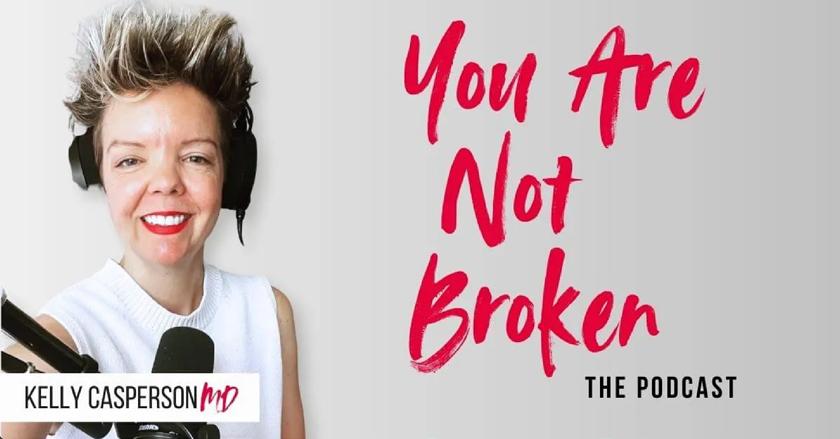
Last issue we asked readers to share their favourite podcasts. Cooma GP Dr Ruby Curtis suggests ‘You are not broken’ by American Urologist, Kelly Casperson.
“Her show focuses on sexual health and hormones and sex therapy. She interviews medical people from around the world and I can guarantee you’ll learn something plus have a good laugh. I never knew so many sex toys existed, it’s blown my mind.” – Dr Ruby Curtis, Cooma
triumphantly sing “you can count on me to save your life! (as long as the consultant says it’s fine)."
"The students involved both onand off-stage were all so talented,” Thompson said. "They can take something as simple as observing a cholecystectomy or being bought coffee and turn it into something that makes us all laugh. I can’t wait to see what life is like when those same people are performing the surgeries and buying the coffees.”
This issue, we’re asking readers to share photos that capture the beauty of Canberra in the chilly months. We’ll include your contributions in the next issue of Canberra Doctor and send you an iconic Canberra scrub cap.

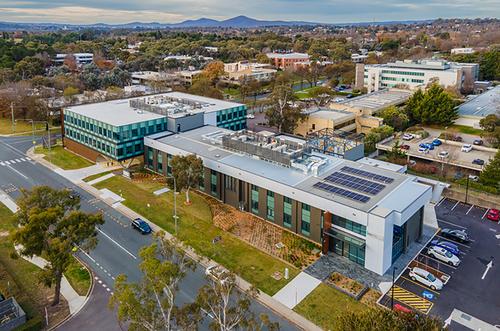













n
n
Dr Julie
Weight,













We exclusively treat patients with PTSD and Depression in Canberra.
The results are a rapid improvement in symptoms for the high percentage that respond.
Contact
Ph: 02 9231 8488
Fax: 02 9012 0654
Email: psychiatrist@neuera.com.au
Our psychiatrist Dr Antonio Simonelli is now seeing patients face-to-face in Kingston (ACT) or via telehealth
Our transformative program is 6 x dosing sessions over 3 weeks
$900 per dosing session*
*Full refund available for program cost if client discontinues after first dose
Canberra is now at the forefront of Ketamine-assisted psychotherapy with an innovative patient-centred, truly collaborative approach.
This is a Canberra exclusive program, and is unlike any other program in Australia
Referrals responded to in 1 business day
Psychiatrists typically seen within 2 weeks.
Refer now to Dr Antonio Simonelli for face-to-face appointments in Kingston (ACT) or via Telehealth
Contact
Ph: 02 9231 8488
Fax: 02 9012 0654
Email: psychiatrist@neuera.com.au
The Neurological Era is here